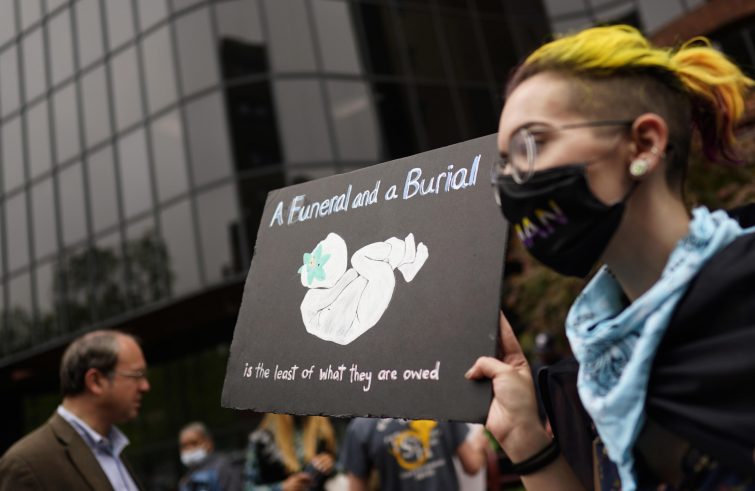
It may be an opportunity to put the rights of women and men back at the center, certainly not to take a step backwards. Assuntina Morresi, Professor of Physical Chemistry at the University of Perugia, offers a different angle on the case that has arisen in the United States regarding the legalization of abortion. A few days ago, the editorial staff at Politico published a draft of the Supreme Court’s intentions to overturn a ruling dating back to 1973 that has since then legalized abortion for American women. The leak could be an artfully mounted strategy to rekindle the American debate in view of the mid-term elections and distract people’ attention. Professor Morresi explains to SIR how the ruling could instead constitute a major change of direction, like the war in Ukraine and the pandemic have done.
Regarding the possible ruling that would overturn abortion rights in the United States, you argue that this is not a leap into the past but a move forward. Why?
I don’t believe that the last 50 years can be erased just like that. I hope the debate will focus on what has happened, on understanding what a right really is and what basic rights are.
It is an opportunity for reflection. I consider it a watershed event, much like the pandemic and the war in Ukraine have been.
The pandemic has shown us that individual rights cannot be separated from the fact that people live in relationship with others. War demands that we understand what is right and what is wrong, and it quizzes us about peace and freedom. This ruling, on the other hand, speaks to us about the right to life of the unborn. To go back would mean to pretend that 50 years of abortions did not take place, whereas we should learn from that experience.
To rethink abortion is, in my opinion, to move forward and change direction.
What could be changed?
We need to move toward a situation where a person’s rights cannot be totally divorced from their relationships, such as the special one between mother and child. There is no going back to the past, but moving forward.
We need to ask ourselves whether abortion rights have given women more freedom, increased their opportunity for fulfillment, and made them happier.
We ought to give this some consideration. I don’t think the overall balance is a positive one.
The issue of abortion is a divisive one, even in scientific circles where those who are in favor of it point to the fact that legal abortions are safer for women’s health.
We must abandon the idea of reasoning only in terms of safe abortions;
we need to think about how to avoid abortions instead.
It is the suppression of a human life: we must gather the strength to prevent them from happening. Moreover, it is quite clear that abortion laws have not limited terminations of pregnancies: data shows that abortions worldwide have increased over time.
In our country, however, the number of abortions has dropped in recent years.
Italy is an exception; however, tens of thousands of terminations still take place every year.
We too are increasingly sliding towards ‘DIY abortions’. And I expect that even those who are in favor of legal abortions would agree with me that the burden of pharmacological abortions is borne entirely by women. It is a procedure that is cheaper for the state because it gets abortions out of clinics and privatizes them, bringing them “to the ‘home”; it undermines conscientious objection because women will only go to the hospital if there are complications, and everyone there is duty-bound to help them. And it leaves women on their own to have abortions at home.
Abortions, however, are a percentage of births. If new births drop, so do abortions.
And unlike other countries, in Italy there is no private market for abortions because terminations can only be carried out in the public sector or in clinics affiliated with the national health service.
Do we have more work to do regarding data monitoring?
The report to Parliament on the application of Law 194 is among the most complete in the world in terms of the data provided. However, the collection of information regarding pharmacological abortion is inadequate because it is based on surgical procedures.
There was some controversy in Piedmont over the decision to give money to women who are planning to have an abortion, in order to support them financially.
To the politicians and groups who are against this, I would ask:
if we all agree that abortion is a deep wound and a tragedy, why oppose providing financial support to women who undergo abortions because they are struggling financially?
The issue of abortion is always dealt with not on its merits, but by making a play on opposing and predetermined sides. We ought to have the courage to face reality.
Given that abortion is a sad event for a woman, why not help her to bring a child into the world, especially if she’s the one who is asking for it?


